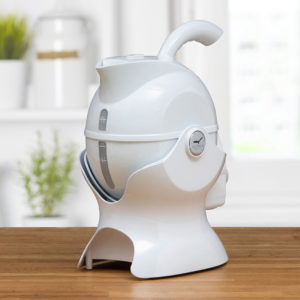Whether you or a family member has had an accident, have become disabled through illness, you are simply getting older or possibly moved to a new home where the house is not as accessible as needed. Adapting your home can be a tiresome and expensive process.
Around 1.9 million households in the UK have one or more people with a long-term limiting illness or disability that requires adaptions to their homes according to the English housing survey for 2014-15. Today, 22% of the UK’s population has a disability, that’s 1 in 5.
Thankfully in 2018, 2.3 million UK homes had at least one adaptation for a person with a disability which means the number of accessible homes in the UK has grown by 25% from 2009 to 2018. It’s a positive figure in our minds.
What contributes to an accessible home in the UK?
In the UK an accessible home is one of the 4 main criteria that make it visitable for most people, including wheelchair users.
- Level access to the main entrance
- A flush threshold
- Sufficiently wide doorways & circulation space
- A toilet at entrance level
How to go about adapting your home:
Many are unsure of the best way to go about adapting the home for better accessibility.
From talking to some of those in the know, we have found that you can consult an occupational therapist or OT who can visit your home and assess your daily living, the needs you have, and then advise on possible adaptation you could make to your home.
To contact an occupational therapist, you would just need to contact your local council. They will have an occupational therapist visit you. The home assessment is 100% FREE
The Occupational therapist will shadow you for a time and ask you questions to help them understand what you would need. This assessment usually takes up to 60 minutes to complete.
REMEMBER: Make sure you tell them about everything you find difficult – even if it is opening a cupboard. They should know!
What changes can be recommended?
- Widening doorways
- Lowering kitchen worktops
- Fitting a stair lift or banister to your stairs
- Adding a bath lift, walk-in shower, or a rail you pull yourself up/out with
- Adding an outdoor ramp or step rail
- Security – outside lights and intercom systems
*They can even recommend a needs assessment if they believe you would benefit from extra help at home*
Money Money Money:
When it comes to adapting your home, there can be a number of costly steps involved, especially if you need to add more space or an extra room which involves planning permission.
What’s great to know is certain changes can be free. Changes that would cost less than £1,000 such as:
- Concrete ramps or steps
- Grab rails
- Automatic lights for your front door
For more expensive adaptations around the home like changing your bathroom to a wet room. The government offers grants for such improvements. Currently, there are two types of grants.
- The Disabled Facilities Grant
- The Independence at Home
When it comes to adapting your home for accessibility there many different roads to go down. Just make sure you take full advantage of your local council’s assessment to help you get on the right track.
While you are waiting for your assessment, why not make life a little easier in the kitchen with your very own Uccello Kettle.













Leave a Comment